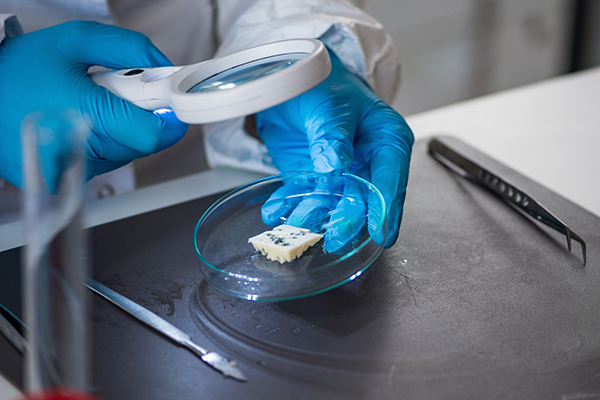Keep Ready-to-Eat Foods Safe
In our first blog for February, we identified some of the risks with ready-to-eat foods. RTE does not mean risk free! We pointed out that food processors have implemented food safety plans that use good manufacturing and good handling practices (GMPs and GHPs). Foodservices often purchase RTE foods to avoid some risk in-house. In fact, many schools do not purchase raw protein foods because of risks from under cooking and cross-contamination. But there are still risks from temperature abuse due to improper holding and from contamination that occurs intentionally, or unintentionally, from employee practices or unclean equipment.
So, what prevention steps can be taken? Avoiding temperature abuse means having calibrated temperature measuring devices readily available and staff knowing how to use these. It means knowing which foods need to be kept out of the temperature danger zone (remember that is between 41°and 135°F) as well as recognizing end-point cooking temperatures for the specific food item, and keeping hot foods hot and cold foods cold.
Defending the safety of food means it being stored in secure locations or closely monitored. Using the “see something, say something” approach prevents unauthorized people from causing harm. Controlling access to food storage and production areas to employees and having staff in public service areas monitoring the action and being a presence can reduce risks. So, if you have a self-serve food bar, schedule employees to be out front. The bonus is they can keep the area clean and replenish supplies, and provide a visible presence.
Avoiding unintentional contamination means storing the food correctly to keep it safe. Staff who are in good health following good hygiene practices and who don’t directly touch the food with their bare hands is key to risk prevention. FoodHandler has several good videos on these topics for staff. The current Model Food Code, released in 2017, states that food handlers should not touch ready-to-eat foods with their bare hands and that suitable utensils such as deli tissue, spatulas, tongs, single-use gloves, or dispensing equipment should be used. Use of these tools provides a barrier between hands and the food, thereby minimizing some of the risk.
Gloves are an easy to use solution to providing this barrier. In fact research has found that customer perceptions improved if gloves were worn by food workers. Risk nothing!
Making sure utensils and surfaces in contact with the RTE food are clean and sanitized, and haven’t been re-contaminated by dirty hands reduces risk of pathogen transfer.
Food safety fundamentals of temperature controls, good employee practices, and a rigorous cleaning and sanitation program are key to keeping food safe. RTE foods reduce some risks, but not all. Since we are in basketball season, we will use the adage of “the best defense is a good offense” and add, “particularly for ready-to-eat foods”.
As we say at FoodHandler, Risk Nothing!
READ MORE POSTS
Handwashing: The Habit that Isn’t as Common as We May Think
Earlier this year, I started to focus our FoodHandler Food Safety blogs on common food safety issues faced in each foodservice operation across the world. We’ve covered some of the most common issues, but perhaps none is more common than improper hand hygiene.
Is Implementing a Color-Coded Food Safety Plan Right for your Operation?
Foodborne pathogens are by far the most prevalent cause of foodborne illness in the United States and across the world. There are 31 known agents that cause foodborne illnesses, and more that are unspecified or yet undiscovered – remember, E. Coli 0157:H7 wasn’t identified until the early-1980s. It is estimated each year, 48 million illnesses occur because of these known and unknown pathogens, resulting in over 3,000 deaths.
Maintaining your Equipment: Is it the Missing Ingredient in your Recipe for Food Safety?
Although I am no longer in day-to-day operations, between our students and foodservice lab at the university and my volunteer activities in my local church, I keep a close hand in food production. This past week, I had the opportunity to lead a group of men at our church in preparation of a luncheon for 100 women who were attending a spirituality retreat. Over the course of the morning, I realized our main cooler in the kitchen was not functioning properly and was about 10˚F above the required temperature. While we do have a commercial kitchen, we do not routinely log temperatures, so when the unit started to malfunction is questionable. Even more concerning was not the lunch we were preparing for, but the dinner that was served the night before for 300+ families in the parish.
Contamination of Food: Let’s Get Physical
Earlier this month, we began a discussion about contamination of food. Our first blog focused on chemical contamination, but in this blog, I’d like to look at physical contamination of food.










